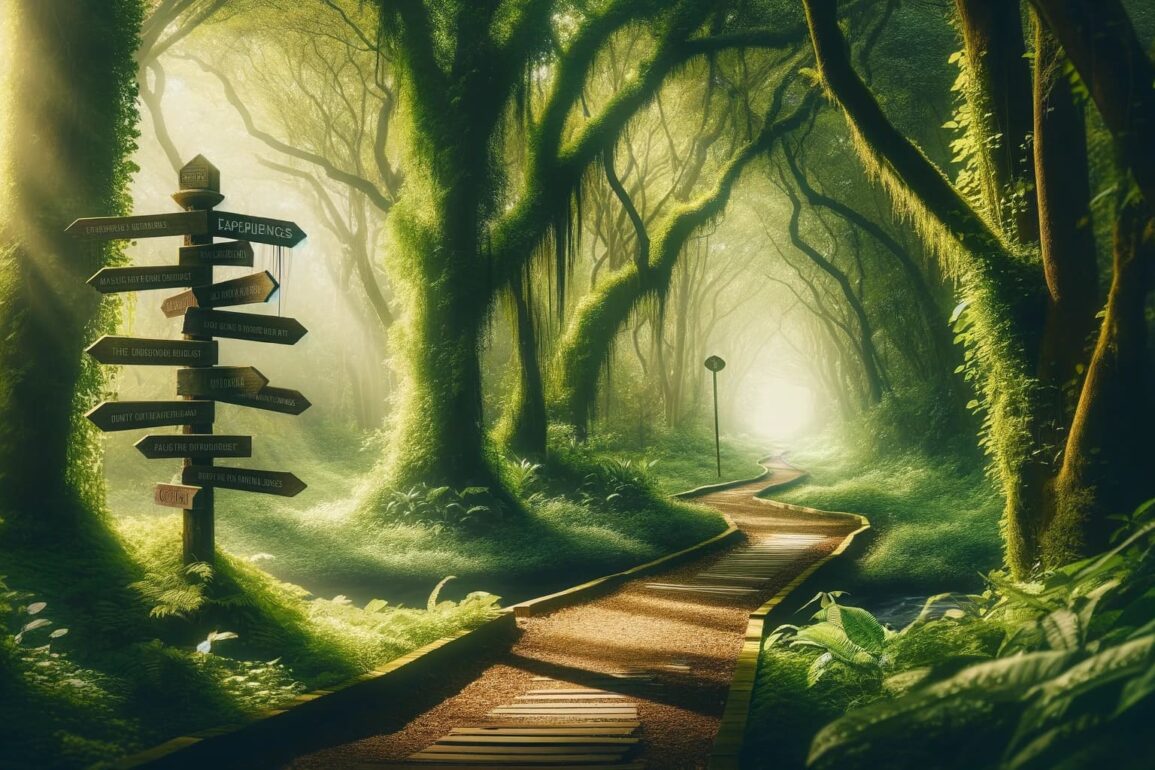For a while now, I’ve been talking about making experiences better and how we can do that effectively using journeys, using the analogy of a nature reserve to explain my thinking.
At the very heart of our work in UX Design, we want to enable users, meet their needs and make experiences better for everyone.
When we meet their needs they should feel invincible.
Here are a few words that describe a similar thing:
- Experiences
- Journeys
- Workflows
These can be singular or plural.
They can be great or they can be small.
Either way, they must never be broken, never frayed and always seamless.
The nature reserve
Let’s talk about the nature reserve analogy I mentioned earlier.
Below you’ll see a large nature reserve. It opened in 2021, was well designed and functioned well.

It met all of the recognised needs of its visitors:
- It was accessible
- It was safe
- It was beautiful
- It was the right length
- It had amenities
- It was clean
The first extension
In the summer of 2022 the nature reserve was extended. The design and build was done by a different provider to the original reserve.

Over time visitors had asked for ‘more’ out of the reserve. They wanted extra parts for activities like a climbing wall, a few more routes and some land for camping overnight but all with the same needs as the original part of the reserve. A small yet functional addition was made.
A short while after it was opened feedback started to come in.
Overall visitors loved that they had the additional space and climbing wall.
However, they displayed confusion as to why certain connections between the pieces of land hadn’t been provided. The camping ground was north of the new piece of land, close to the bend in the river but there was no way to get to the main amenities other than going the “long way round” walking south and west. No bridge was provided.
The climbing wall was a big pull for visitors, however, when they got there you weren’t allowed to climb unless you’d signed a waiver at the main visitor center in the west part of the reserve but there was no notice of this as you walk into the reserve from the car park to the far west so you had to double back on yourself before even getting to climb.
There were also a couple of near misses with visitors wandering in the wrong direction and meeting other inhabitants of the reserve.
The second extension
After a consultation in the early part of 2023 another application was made to extend the reserve farther north to add in more activities like white water rafting, paddle boarding and fishing areas and add in some new routes to the reserve.

Again, feedback came in once it opened up and people loved the activities. Whilst new bridges had been erected to connect the reserve, visitors complained about the lack of a direct connection between the newest section and the oldest. Some feedback was provided from a safety perspective that if there was an emergency there was no quick way to get to the medical center at the heart of the reserve and yet again routes which had been created were slightly unsafe and were the “long way round”.
Frayed edges
As much as the reserve had grown into a beautiful piece of land that visitors would enjoy, it also had its faults.
In our world we can interpret the nature reserve as a large product. When creating and building happens at speed, quite often the seams between one place and another can start to fray. This hampers the overall experience that someone may have when you take a look at their experience as a whole.
It can happen when creating and building happens in isolation of themselves without running through the whole experience of the things around it.
As an example, if someone had added visitor needs to a journey or experience map when extending the reserve the first time, they’d likely have noticed the gaps in meeting those visitor needs prior to building it. The experience could have been tweaked in order to meet them better.
The more edges that fray, the worse the experience gets, essentially turning into ‘debt’. It’s not great for users or ourselves.
Retrospectively dealing with frayed edges
Our users don’t slow down so neither should we. So how do we retrospectively deal with frayed edges?
It’s actually easier than you’d think.
We do what we’d have done at the start. We document the whole journey, in its entirety. We identify those pain points, toil, challenge areas, lack of guidance, support or sign-posting and broken connections. All the bits which are just “gah!“.
We then run the whole team through this journey and the identified issues and help them see what we’re seeing. From there we can prioritize the most toil and start to fix those frayed edges, often grabbing the quickest wins and shipping them.
Living journey maps = max value
The most important thing out of all of this is the realization that journey maps should never become artifacts that are used once and then put in a drawer somewhere.
That does not unlock the maximum amount of value.
If they’re kept as liveable documents, kept up to date and used as part of your product process then you’re nailing it.
You can gamify it to an extent whereby you want no amber or red cards on the map and you’re in constant improvement mode whether you’re picking up a piece of toil to fix or you’re adding in a new feature to your area of the product.
Take-aways and tips
- Er on the side of caution when designing and building in isolation
- Use living maps
- Use the maps as part of your product process and roadmapping
- Have all disciplines go through your product regularly
- Align feedback to your map

